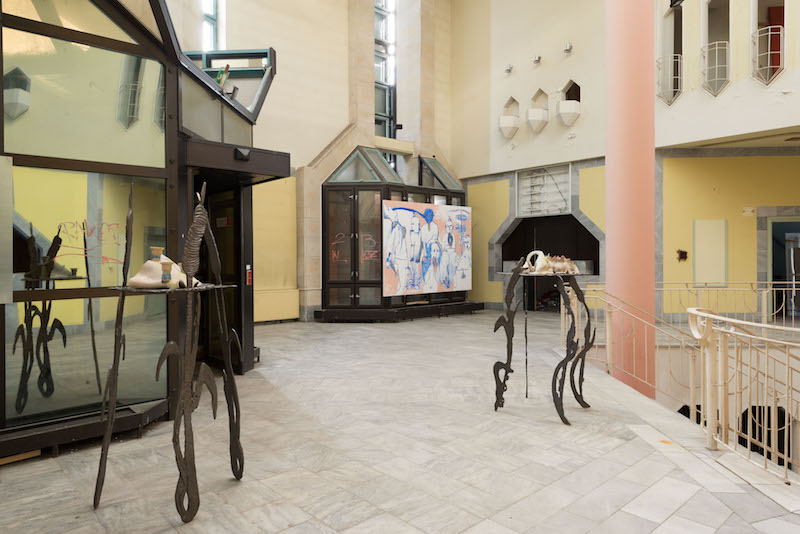
Installation View "The State of Having Left": Jean-Marie Appriou (front) and Melike Kara (back)
There is something fascinating about the atmosphere of abandoned buildings and areas, because the architecture's decay reveals something about the past, about people and objects who used to have a certain place at a certain time. It's a particular absence, a "State of Having Left", which we become aware of. In a group show with the same title, co-curators Lisa Offermann and Pauline Seguin installed works by Jean-Marie Appriou, Violet Dennison, Stefanie Heinze, Melike Kara, Benjamin Lallier, Michail Pirgelis and Carsten Tabel in an abandoned bowling center in Leipzig to address these remains of society. The show, however, is exclusively accessible online. Offermann, who originally studied veterinary medicine and later changed to art history, is based in Berlin. She previously curated exhibitions in project spaces, such as Archiv Massiv in Leipzig and has worked for several contemporary art galleries. In our interview she speaks about exhibitions as stages, the remains of corporate society and ‘The State of Having Left’.
Anna-Lena Werner: Lisa, you curated the group exhibition The State of Having Left in an abandoned building in Leipzig. What made you choose not to have a physical opening or opening hours, but make the show exclusively accessible through the Internet?
Lisa Offermann: The venue of the exhibition is so special, as it doesn’t allow the viewer to locate the show. It is definitely not a white cube but also architecturally it's unnamable. The show seeks for an inability to locate it in both place and time. Therefore the Internet is the best place to present it.
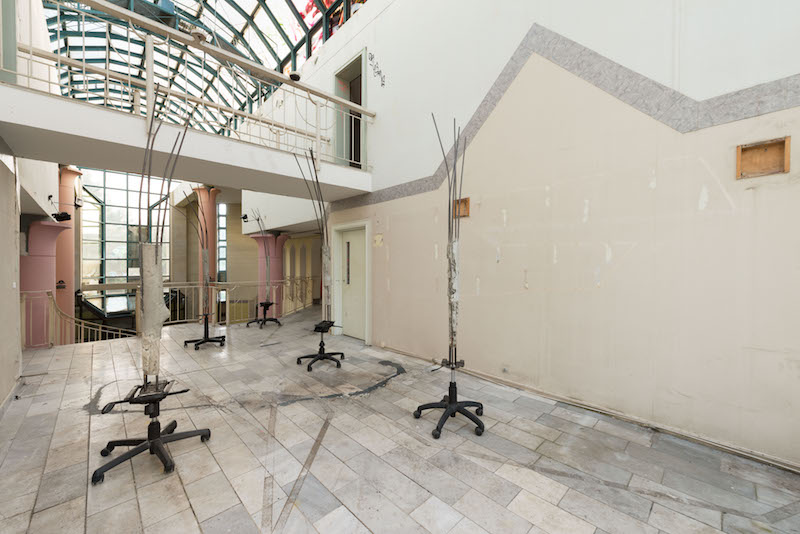
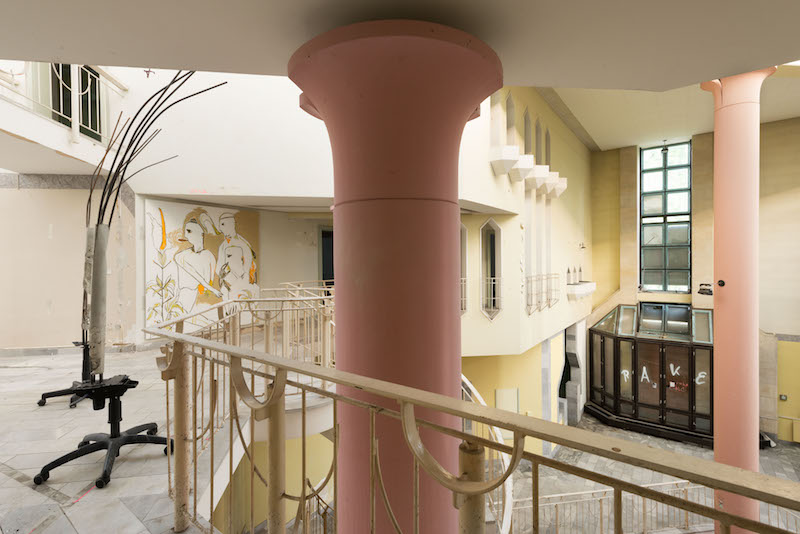
"Nothing really mattress but I guess I knew that all along", 2015 (painting by Melike Kara) © Violet Dennison
ALW: The building is full of colours, forgotten props and has a outstanding architecture. What was its original purpose?
LO: Originally it was used as a bowling center in the GDR. Recently an interesting documentary was published about it. The party used the bowling center to divert the public from the social and architectural wrongs which revealed themselves ever more in the mid eighties. It was sensational for Leipzig to have this huge center for bowling, such a part of American culture, in the heart of their city. Now, it has been abandoned for the past 18 years and it's unusable for any matter. It becomes a memorial, but it's also too huge to tear it down.
ALW: As opposed to a white cube, the exhibition rather space reminds of a theatre stage. Was it challenging to install and curate the show?
LO: You are right. I like the idea of a stage and the works as the protagonists. It's a play in the sense that this setting and these works have such a strong individual presence but also enter into a conversation with each other. Therefore, we had to search for the best setting for every work. That was truly an adventure as the building is several floors deep. We needed to install lights to explore all the dark corners. There is certainly something sacred in entering these spaces which weren’t visited for such a long time, at least not by humans.
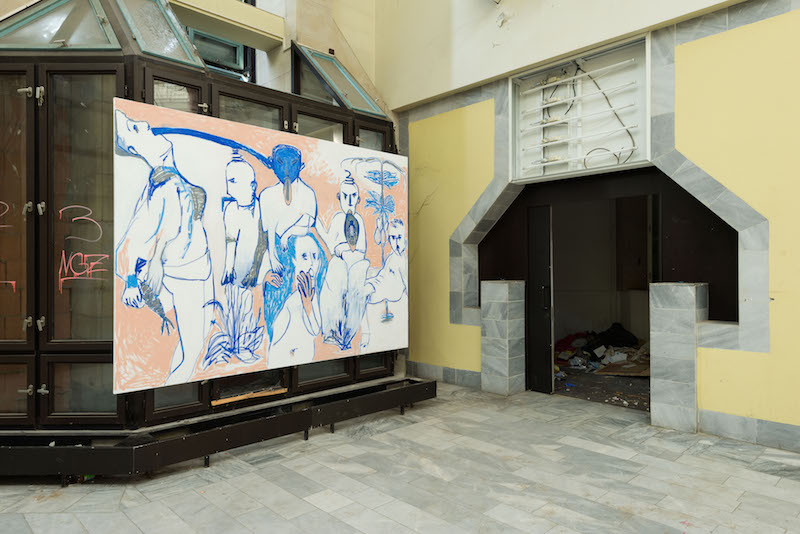
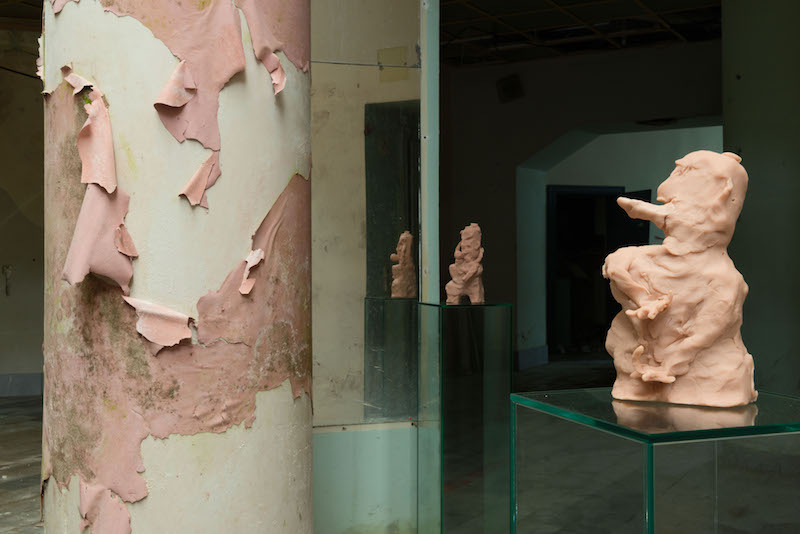
“The smell of possibilities (of the buzzing dialogues) you do not hear what they see. Take a breath of the fumes that result from your silence”, 2015 and “Untitled 1”, 2015 © Melike Kara
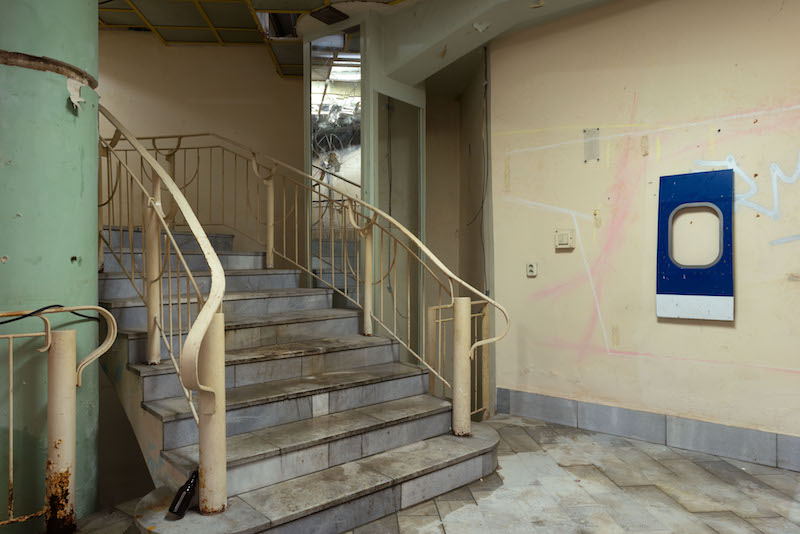
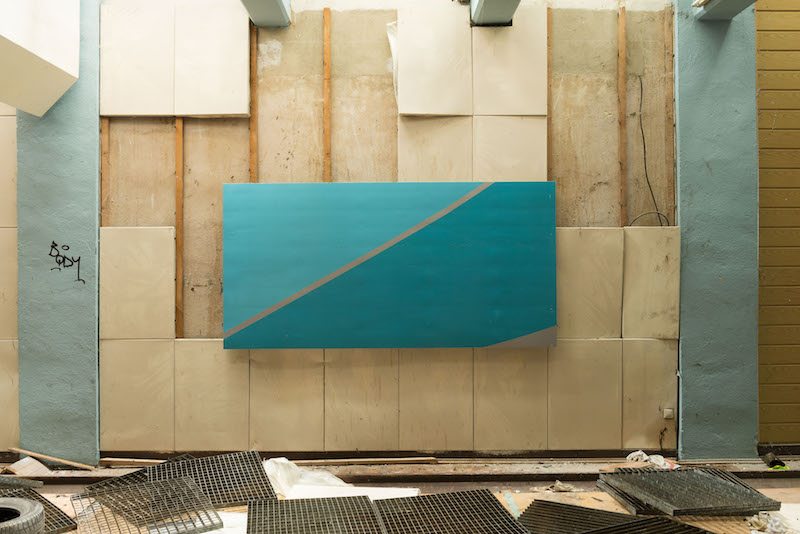
"Salad Days" © Carsten Tabel
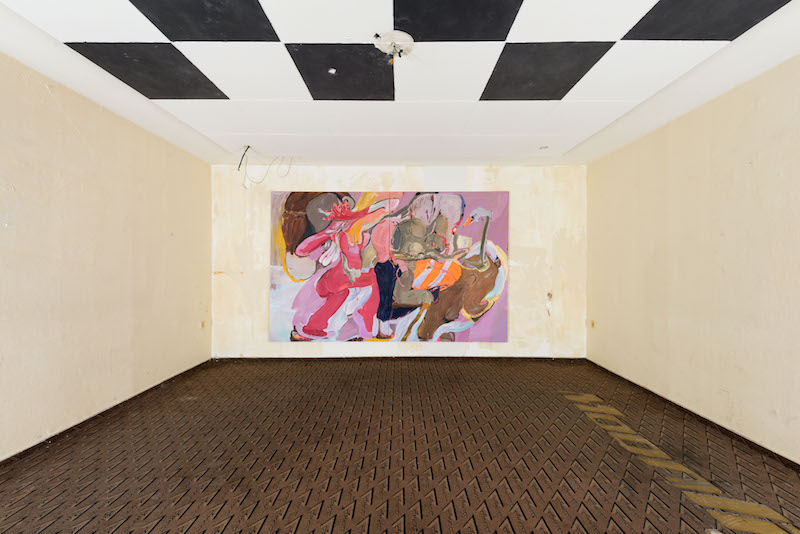 “Gentle Nudge (The Medium Walk)” 2015, © Stefanie Heinze
“Gentle Nudge (The Medium Walk)” 2015, © Stefanie Heinze
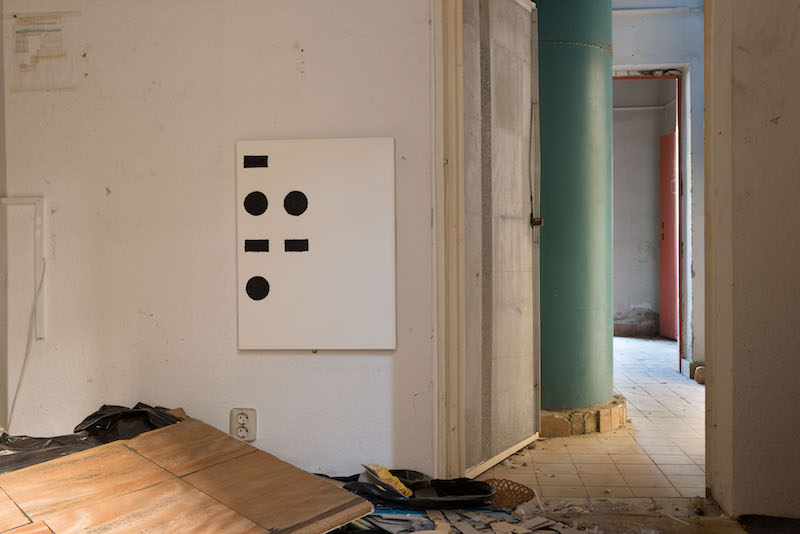 "Time", 2015 © Benjamin Lallier
"Time", 2015 © Benjamin Lallier
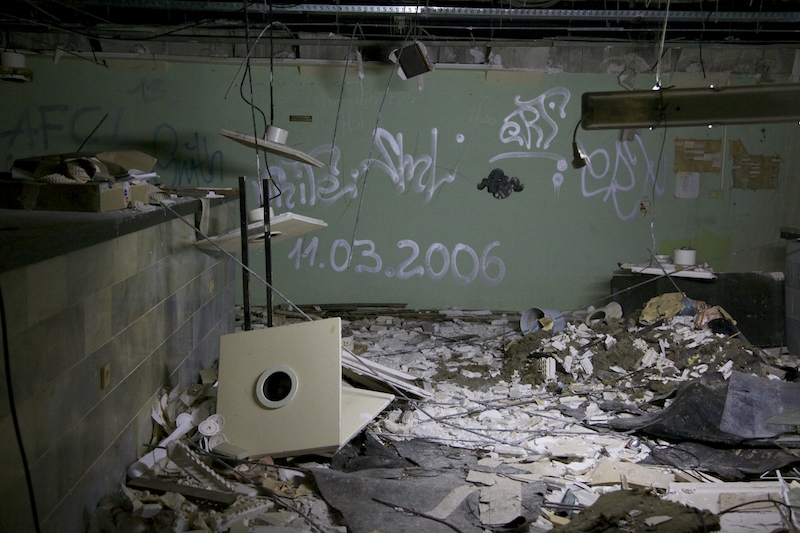 The Cloud", 2015 © Violet Dennison
The Cloud", 2015 © Violet Dennison
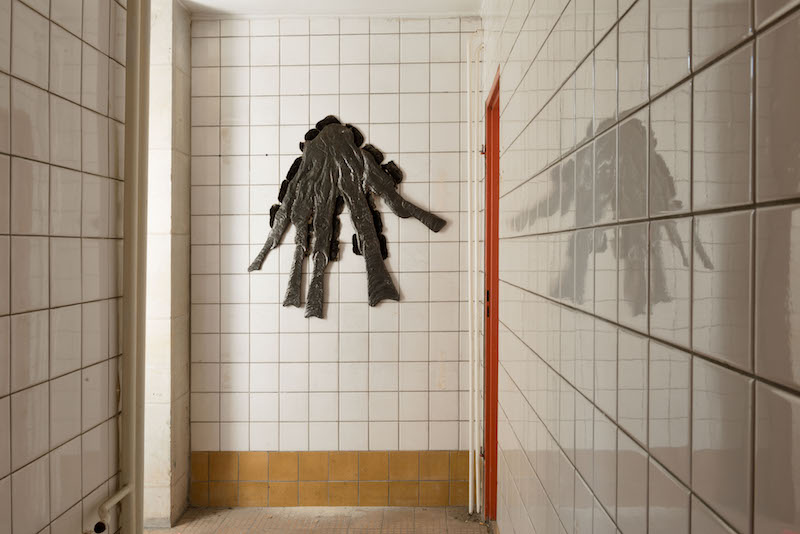 "Ray Nails", 2014 © Jean-Marie Appriou
"Ray Nails", 2014 © Jean-Marie Appriou
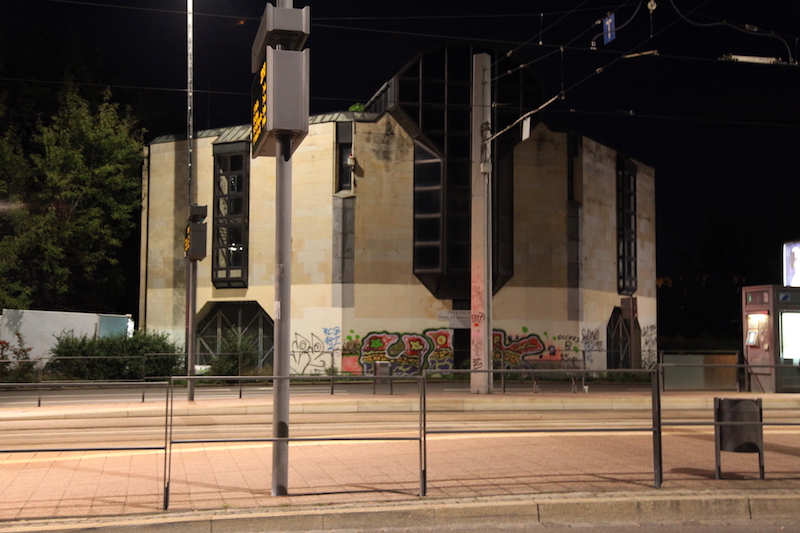


“The smell of possibilities (of the buzzing dialogues) you do not hear what they see. Take a breath of the fumes that result from your silence”, 2015 and “Untitled 1”, 2015 © Melike Kara
ALW: The colours of, for example, Melike Kara’s paintings and the material of her sculptures blend seemingly organic into the space. Did some artists create the pieces specifically for this context?
LO: That was our initial idea but we experienced that it was quite difficult to plan a setting beforehand as we hadn’t seen 80% of the building and we didn’t want to limit our options. We had to explore as we were installing, which was great and eventually fit to the very fluent concept of the show.


"Ocean", 2013 and "Left behind", 2015 © Michail Pirgelis
ALW: Michail Pirgelis’ aerodynamic sculptures or Violet Dennison’s office chair installations or aluminium casts both, in their own way, address a sort of ‘State of Having Left’ – a crushed dream, something decaying. How is the exhibition’s concept related to this?
LO: Certainly the show works with the idea of the remains of our wasting modern society. For instance, I decided not to write a typical, explanatory press release but used excerpts of global business companies’ philosophies which, not surprisingly, resemble each other. They depict humans' desire to always reach out for more. The left overs from this desire develop an independent existence, relieved from their original function. They are not vanishing just because they become obsolete, but they live their one life on the margin of our awareness.
"Salad Days" © Carsten Tabel
ALW: On the website runs the video "Salad Days" by Carsten Tabel, in which a couple of girls each read fragments of a personal piece of text. What is the work about?
LO: Carsten’s text is a very dark and sarcastic narration on illusions we are chasing and the moment in which we have to accept that these desires stay unaccessible.
Since 18th of October 2015
Jean-Marie Appriou, Violet Dennison, Stefanie Heinze, Melike Kara, Benjamin Lallier, Michail Pirgelis and Carsten Tabel
Curated by Lisa Offermann and Pauline Seguin
 “Gentle Nudge (The Medium Walk)” 2015, © Stefanie Heinze
“Gentle Nudge (The Medium Walk)” 2015, © Stefanie Heinze
 "Time", 2015 © Benjamin Lallier
"Time", 2015 © Benjamin Lallier  The Cloud", 2015 © Violet Dennison
The Cloud", 2015 © Violet Dennison
 "Ray Nails", 2014 © Jean-Marie Appriou
"Ray Nails", 2014 © Jean-Marie Appriou

"The State of Having Left", Outside
